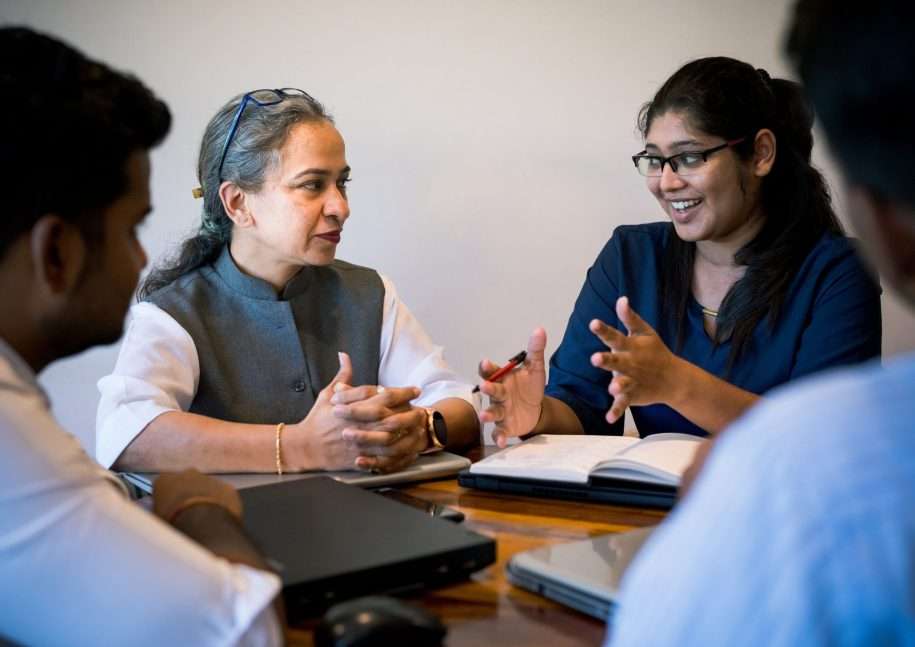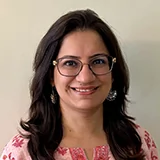NBFIs have introduced “subjective” discretion in the underwriting and credit analysis process for women entrepreneurs. While mainstream financial institutions do not back this strongly, the non-traditional institutions have taken a leap forward for inclusion of women borrowers.
Women-run MSMEs constitute only 20% of India’s dynamic micro, small, and medium enterprise (MSMEs) sector, at 28 lakhs. The success of these enterprises depends on access to timely and affordable capital that can be tapped into through different financing channels. Literature highlights several barriers such as prejudiced social and cultural norms in addition to the general barriers to access, product fit and documentation needs, which impede women’s access to capital. The estimated credit gap for these enterprises is pegged at INR 1.37 lakh crore.
Recently, LEAD in partnership with Villgro and ANDE conducted a study to examine the factors contributing to the gap in financing women-led enterprises. The study provides insights from a survey covering 800+ MSMEs led by both women and men, seeking credit exceeding INR 10 lakhs in FY 22-23. The sample consists of women across India and from different sectors. To enable comparisons with enterprises run by male entrepreneurs, a sample of male enterprises was surveyed as well. Selecting a representative sample for the study, in the absence of robust listing data, was a hurdle since the enterprises of interest were of a higher order. The research team sought support from industrial associations, banks and non-governmental organizations working with women entrepreneurs for this purpose. Identifying enterprises led by women posed a challenge as well, as most enterprises are typically run in partnership with male counterparts or family members.
Sample Profile
Out of the 395 businesses with credit requirements of INR 10 lakhs and above, a majority are concentrated in the services sector (54%, n=212), followed by manufacturing (33%, n=130), and Trade (13%, n=53). Looking at the sub-sectors, the enterprises are more likely to be involved in services and manufacturing of food and beverages, followed by the creative arts and entertainment industry.
Figure 1: Representation of women entrepreneurs across key sub sectors
Women tend to require more capital for upcoming cash flows as compared to men. Since most of them initially bootstrap the businesses with personal savings, their capital requirement is higher in the later stages of the business. Moreover, their male counterparts rely on multiple smaller ticket-size loan products from various sources such as other banks, MFIs, family and friends, and money lenders, whereas women are reluctant to depend on multiple financing options at the same time. Men tend to seek more gold loans and credit through money lenders. Financial institutions also corroborate that the self-saving behaviour and norms around gold as personal security prevent women from collateralising their gold to a large extent.
“Financial Institutions have bias towards the non manufacturing sectors for their lack of stability. This unfortunately gets translated towards women entrepreneurs who operate in these sectors.”
– Leading Digital Lending Platform
Key Challenges
Structural & Entry-level Barriers: Women-run enterprises are younger and have a higher level of formal education than their male counterparts. More than 70% of women entrepreneurs are less than 50 years of age, compared with 54% of male entrepreneurs. The vintage of businesses run by women is lesser than male entrepreneurs. More women are new entrants as only 33% of women-run enterprises have a vintage of more than 10 years as compared to 60% such enterprises led by men. Women entrepreneurs who are younger in age are more educated, with newer businesses. However, they mostly operate businesses in sectors that are considered less risky and acceptable by family members, involve less travel and minimal customer interface (such as food and catering services, arts and entertainment among others.)
Business Ownership is Skewed Towards Men: Despite having higher education qualifications, women often do not own a majority share of the enterprise. Only 51% of female respondents reported having sole proprietorship as compared to 60% of male respondents. Among partnership businesses, 66% of the women entrepreneurs own half or less than have of the business. On the contrary, 66% male entrepreneurs have the majority ownership stake in the business.
“Male entrepreneurs with poor credit history apply for loans in the name of women members of the family.”
– Mainstream Financial Institution
Access to Networks is an Enabler for Women Entrepreneurs: Women entrepreneurs face several challenges at different stages of their credit applications. Fewer women entrepreneurs reach out directly to the banks without any support. Financial institutions also corroborated the challenge of identifying ‘eligible’ women entrepreneurs for higher ticket-size loans. Given their limited and often biased interactions with financial institutions, they rely on the support of male acquaintances at different stages of the process.
“Lenders now reach out to women entrepreneurs on social media platforms where they tend to be more active and enjoy great visibility.”
– Leading NBFC
The study also found that membership in networks is a strong determinant of a woman entrepreneur’s decision to apply for credit. Almost 80% of women entrepreneurs who are part of networks applied for credit, as compared to ~50% without network membership. Networks include incubators and accelerators like T-Hub, CIIE at IIM Ahmedabad, industry associations like CII, FICCI, NASSCOMM, and other formal platforms that provide networking opportunities for entrepreneurs.
While women did not report facing any financing gaps from the supply side, their experience of availing credit was discriminatory.
54% of women entrepreneurs reported a turn-around time of more than 30 days as compared to 28% of men. Not experiencing a financing gap could further be attributed to women negotiating three times more than their male counterparts. While this fact remains, these women entrepreneurs are more educated, and may have also requested a conservative amount from the bank. The financial institution representatives interviewed for the study are of the view that objectively designed credit scoring and approval models are in place to tackle these biases, and financial applications are reportedly evaluated based on a business’ merits and an entrepreneur’s eligibility. Some of the women entrepreneurs offered a divergent view, highlighting biases in loan processing and subsequent reduction in the requested amount. Moreover, the algorithms used for credit scoring and approval are often gender-blind and are not based on equity parameters, and thus can reinforce biases.
Strategies for Enabling Credit Access
At the program level, there is a need for active engagement with women entrepreneurs, recognizing the importance of social networks in enhancing credit access. The process-level recommendations highlighted in the report call for improving the gender sensitivity of banking staff to ensure equitable credit assessment, while also advocating for a gender-intentional approach at various organizational touchpoints. Furthermore, the necessity of transitioning from generic financial instruments to tailored solutions for women entrepreneurs is highlighted at the product level.
Lastly, insights on optimizing government initiatives to facilitate the implementation of these interventions are to be focussed. Leveraging the Digital Public Infrastructure (DPIs) would help expand the scope of financial inclusion for women-run MSMEs. DPIs foster credit lines for MSMEs without requiring an extensive infrastructure. However, there are other limitations in terms of compliance and doorstep delivery of financial services. The Open Credit Enablement Network (OCEN) aids banks and other financial institutions in reducing costs by directly engaging customers through Loan Service Providers (LSPs).
LSPs, in turn, benefit from offering a broader array of products and services, enhancing customer retention and competitiveness. While banking correspondence models have worked in micro-loans, a similar model with digitally assisted platforms could ease access issues and provide support to public sector banks for better reach. Other developments by the government and private institutions like the launch of an app-based invoice financing loan platform by SIDBI, and increased use of securitization by financial institutions for MSMEs have improved the availability of credit for MSMEs. India’s DPI driven strategy offers a model for economic growth, innovation, and financial inclusion.
About the Authors
Vatsima Tripathi is a Senior Research Associate with the Small, Growing Businesses and Employment vertical at LEAD. Her research interests lie at the intersection of livelihoods, gender, and circular economy. She specialises in mixed methods studies, with a strong focus on qualitative research.
John Arun is a Senior Expert with the Small, Growing Businesses and Employment vertical at LEAD. His core areas of work range from project design, incubation support, project implementation and monitoring & evaluation. With an extensive experience of 12 years in the development sector, John has a special interest in MSME growth and finance.





